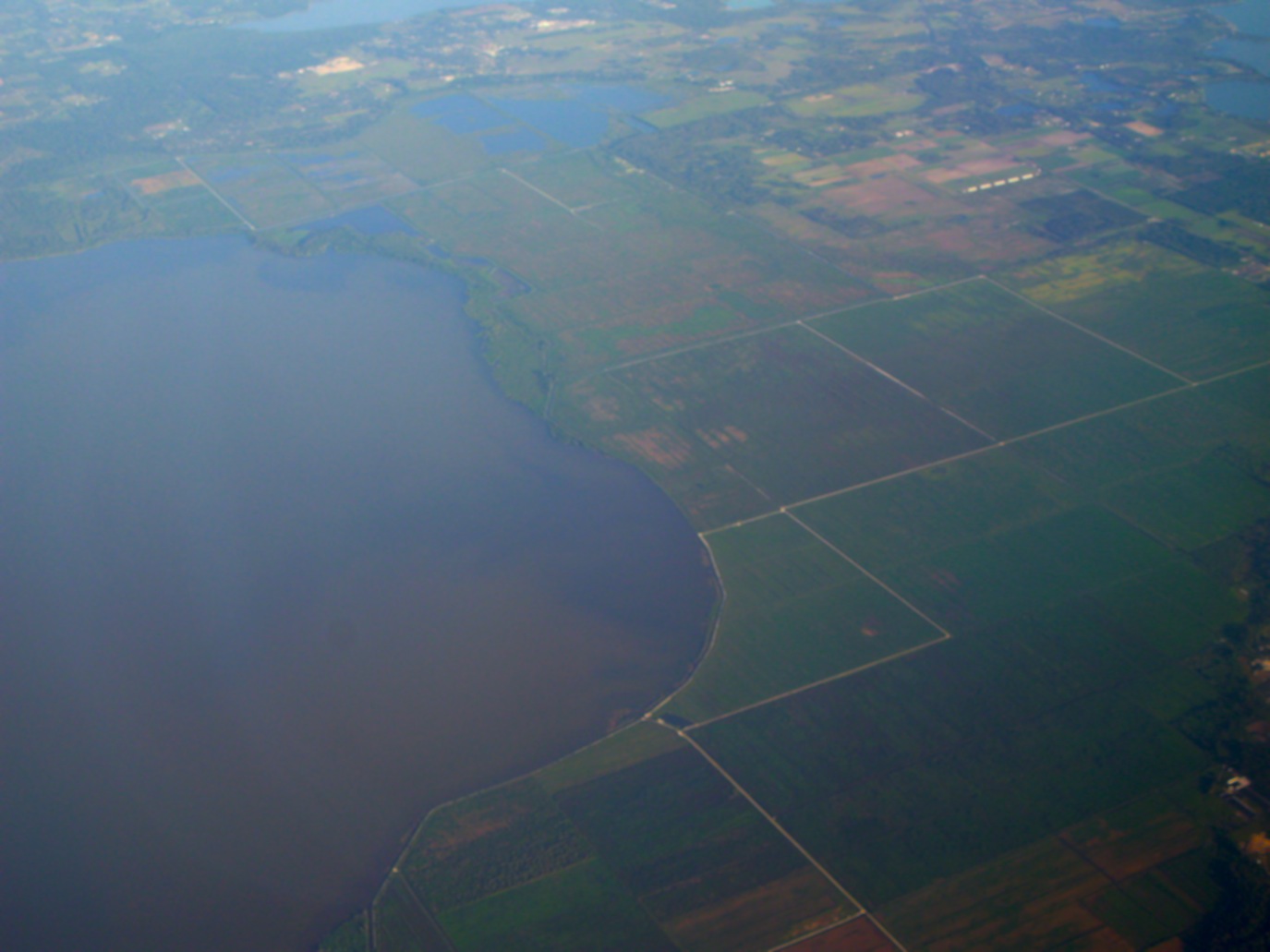The ecological tragedy of
Lake Apopka as a
political, environmental and cultural disaster area
Three
factors reveal underlying causes and consequences of environmental change in
the 20th century, despite the rise movements like conservation to
protect wildlife.
1. A reclamation & water
diversion project, in 1941, for the Ocklawaha valley.
2. Programs that reinforced
poor farming practices even in times of oversupply.
3. Suburban sprawl since 1956
has altered watersheds and landscapes.
Each of these stories –by transference – or comparison– helps us to discern the factors involved with a local ecological disaster.
Lake Apopka, central Florida.

Once Florida’s premier bass fishery (sport) and
second largest lake, the lakeshores today harbor two superfund sites, two
landfills, a medical waste disposal site, an agricultural water run-off, marsh
restoration project, and a growing suburban development pattern of land-use and
land-use changes.
First, the diversion of water in the Ocklawaha River Valley, of which Lake Apopka is
one source, for agricultural purposes, established a recurrent problem of water
degradation due to a sub-tropical climate and unstable land-use practices.
Second,
the state and federal policies to aid agricultural development through
compliance with drainage district requests, even in periods of agricultural
surpluses, created a pattern of canal digging, dams and dikes that encouraged
land owners to seek more and more federal support for expansion of vegetable
crops and silage for livestock.
Third,
the desire for the residential pattern dominated by single-family housing units
required a series of structural modifications including pavement, extending
water and sewer lines, electricity and urban services that had the combined
impacts of diverting water and resources that encroached on the water quality
of the lake, its fishery, and birds.
The
combined influence of these three disparate impacts is greater than the sum of their
contributing parts lead to a cultural alteration of the lake’s ecology. The
first signs of this shift were the change in the quality and quantity of the
bass fishery. But as time progressed the drainage and dike building along the
Lake’s north shore exposed old lake bottom to intensive farming. The organic
content of the soil – composed as it was from the decayed marsh
vegetation of the lakebed—while ideal for crops began to change. When
water logged soils are exposed to air, they are oxidized by bacteria and
literally disappear into thin air. Soil loss and vegetable growing required an
application of fertilizer and pesticides.
As
the industrial changes required to sustain profitable agriculture spread,
several unfortunate human errors contaminated the lake including a spill at a
chemical plant of the pesticide DDT near the south western—spring fed
portion of the water body. The migrant workers used to plant and harvest the
growing agricultural areas north of the lake were required to apply fertilizer,
pesticides and herbicides to assure more robust crops despite the vicissitudes
of changing climatic conditions and soil loss. All of these landscape impacts
left ample evidence in water, wildlife, and people of a shift from a robust
fishery-sustaining place into an agrarian waste handling facility detrimental
to bass fishing. But of all the evidence for degradation none is more revealing
and disturbing than the loss of lives and health among the farm worker
populations toiling in the lakeside orchards and fields.
525 words
Websites of Interest:
Apopka Area Community Partnership wiki
Alligator and Bass Deformities –
http://findarticles.com/p/articles/mi_m1594/is_n1_v7/ai_18082848/
http://nationalzoo.si.edu/Publications/ZooGoer/1995/4/cautionarytales.cfm
http://findarticles.com/p/articles/mi_m1200/is_n7_v146/ai_15721244/
http://www.accessmylibrary.com/article-1G1-18082848/sex-and-single-reptile.html
Restoration planned
and re-flooding of wetlands:
Lake Apopka timeline
site: http://www.fola.org/PDFs/LakeApopkaTimeline.pdf
http://restoration.doi.gov/pdf/finalrestorationplans/fl_lakeapopka_06-04.pdf
http://fishweb.ifas.ufl.edu/Faculty%20Pubs/CanfieldPubs/AltStableStates.pdf
Kevin Spear: http://orlandosentinel.image2.trb.com/orlnews/media/flash/2007-09/25405061.swf
http://www.thefreelibrary.com/The+Lake+Apopka+agreement.-a0201609208
Dying Birds:
http://www.migrantclinician.org/files/resourcebox/LakeApopkaReport.pdf
Orlando Sentinel
Articles on Lake Apopka:
http://articles.orlandosentinel.com/keyword/lake-apopka
Place Index | Analytical Planning | Criteria | Places | Geographical Intelligence | Community